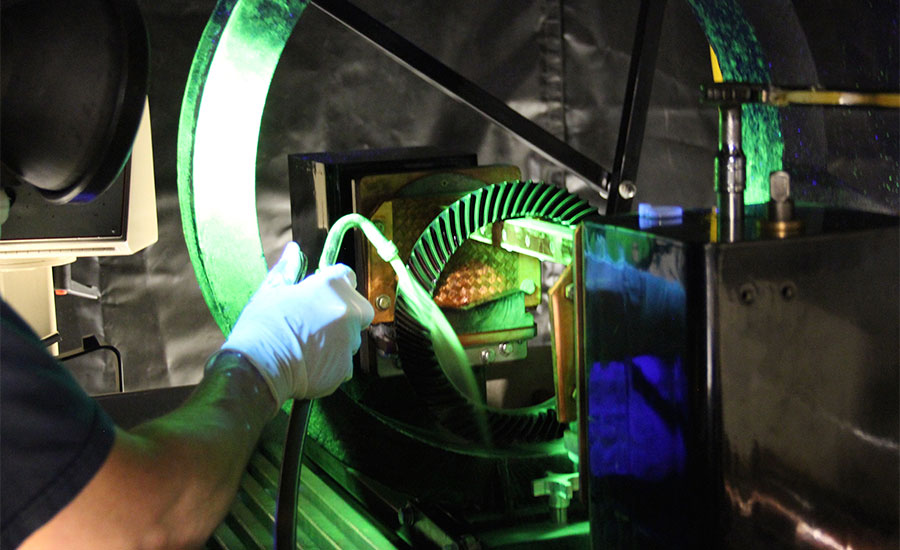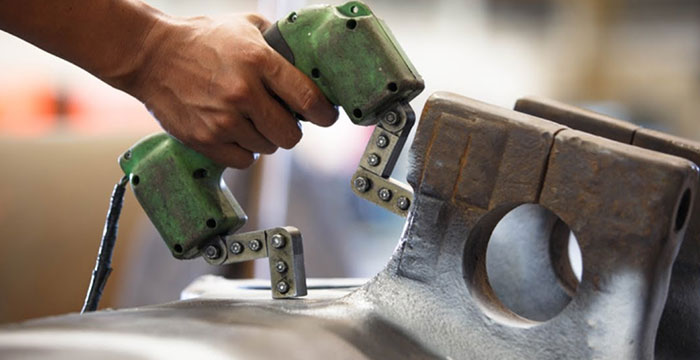Magnetic Particle Inspection (MPI)

Magnetic Particle Non-Destructive Testing is the act of identifying imperfections in a material by examining disruptions in the flow of the magnetic field within the material. This method is used for the detection of surface and near-surface flaws in ferromagnetic materials and is primarily used for crack detection.
Best NDT Inspection Technologies Pte Ltd provides a variety of Magnetic Particle Testing services including dry powder, wet visible, wet fluorescent using an electromagnetic/permanent yoke, Magnetic Particle Inspection Wet Bench, coils, etc.
Advantage
- Surface & subsurface discontinuities, Example: crack, seams& inclusions on ferromagnetic materials.
- Monitoring service flaws in bars, forgings, weldments, shafts & components.
The method of magnetisation must produce a magnetic field with lines of force at a large angle to the expected direction of the cracks to be detected, so that it is usual to apply the magnetisation more than once in different directions, for example in two directions mutually at right-angles, but methods of swinging the field direction during magnetisation are available.
The magnetisation may be produced by any of the following methods:
- Applying a permanent or electro-magnet to the surface (magnetic flow)
- Passing a large current through the specimen, or locally by means of current prods (current flow)
- Putting the specimen inside a current-carrying coil, or forming a coil around the specimen
- Making the specimen the secondary loop of a transformer – (induced current) – suitable for ring-shaped specimens
- Placing a current-carrying coil or loop close to the specimen surface
- Threading a current-carrying bar through a hollow specimen.
The electric current used may be DC or AC of any waveform, but the current required to produce adequate magnetisation depends on the waveform of the supply, the magnetisation method used, and the material of the specimen. It is most important to ensure that the current used is correct for the specimen size and shape and also that the direction of the magnetic flux produced is suitable for the cracks expected.
By using a combination of two magnetic fields, a swinging or rotating magnetic flux can be produced, which will detect a crack in any orientation.
Usually the iron particles – dry powder or suspended in a liquid (magnetic ink) – are applied while the magnetising current is still flowing, but residual magnetisation is sometimes used, when the particles are applied after magnetisation. Some steels retain sufficient magnetisation for this method to be satisfactory, and in this case smaller, more portable, magnetising equipment can be used. Magnetic inks (particles suspended in a liquid) are used more widely than dry powders.

They are applied by low-pressure spray, dipping or brushing; it is important to use plenty of ink and to allow time for the particles to flow over the surface and migrate to any cracks. On dark surfaces a very thin layer of white paint can be applied to give a higher contrast indication.
Fluorescent particles, which require UV-A illumination, are widely used and coloured particles are also available. The indications of cracks can be preserved by photography or by the use of peel-off transparent adhesive film. MPI methods can be applied to relatively rough and dirty surfaces, but the flaw sensitivity may be impaired. Magnetic methods for underwater applications have been developed. Only under very special conditions can sub-surface flaws be detected by MPI.
